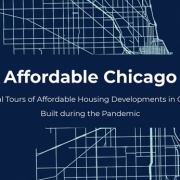Affordable Chicago Video Featured at NCSHA Housing Credit Connect 2022
As a Platinum Sponsor at the National Council of State Housing Agencies (NCSHA)’s Housing Credit Connect conference in June 2022, ProLink Solutions premiered the “Affordable Chicago” video. The video highlights three affordable housing developments that were built in Chicago during the COVID-19 pandemic. The purpose behind producing this video was to show how resilient the affordable housing industry has been through even the toughest times.
Chicago Housing Trust, a non-profit organization who manages various housing programs in Chicago, particularly the city’s Inclusionary Housing program, assisted the selection of the following developments featured in the video:
- The Seng (a part of the Big Deahl) developed by Structured Development: 34 ownership units affordable for households at 100% AMI, created under the city’s Inclusionary Housing program.
- Fifth Avenue Apartment developed by Interfaith Housing Development Corp: 72 rental units affordable for households at 60% AMI, created with 9% LIHTC.
- Archer Center developed by SkyRiver Archer Development: 12 ownership units affordable for households at 100% AMI, created under the city’s Inclusionary Housing program.
We invite you to watch our video about these exciting affordable housing developments in Chicago below. If you are interested in learning more about any of the projects, contact ProLink Solutions at marketing@prolinksolutions.com.












